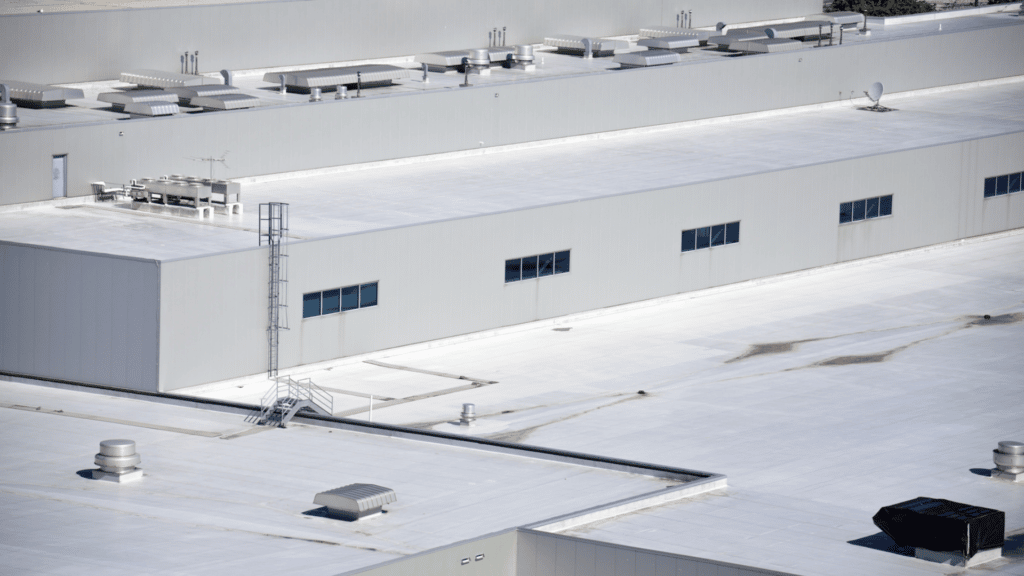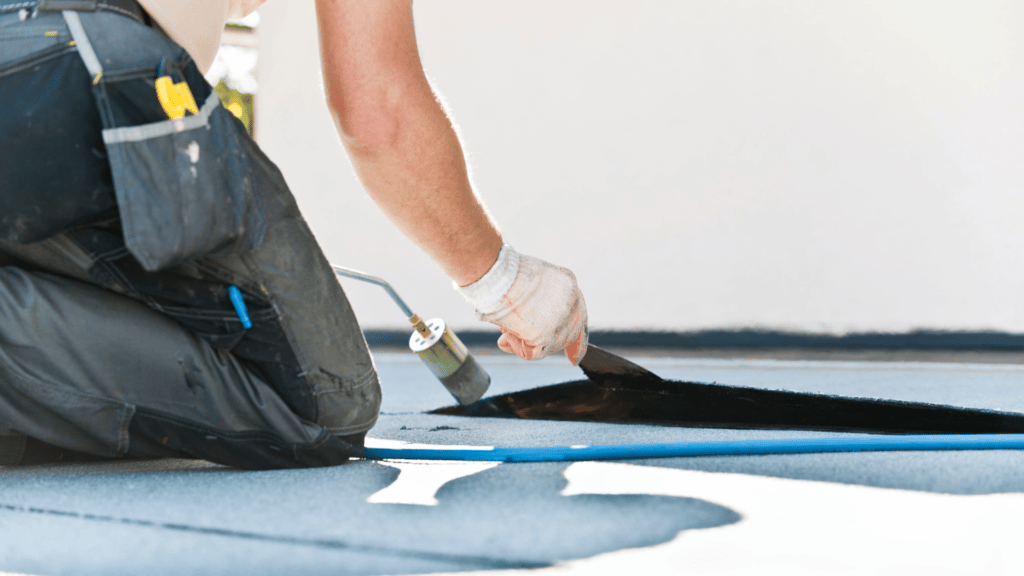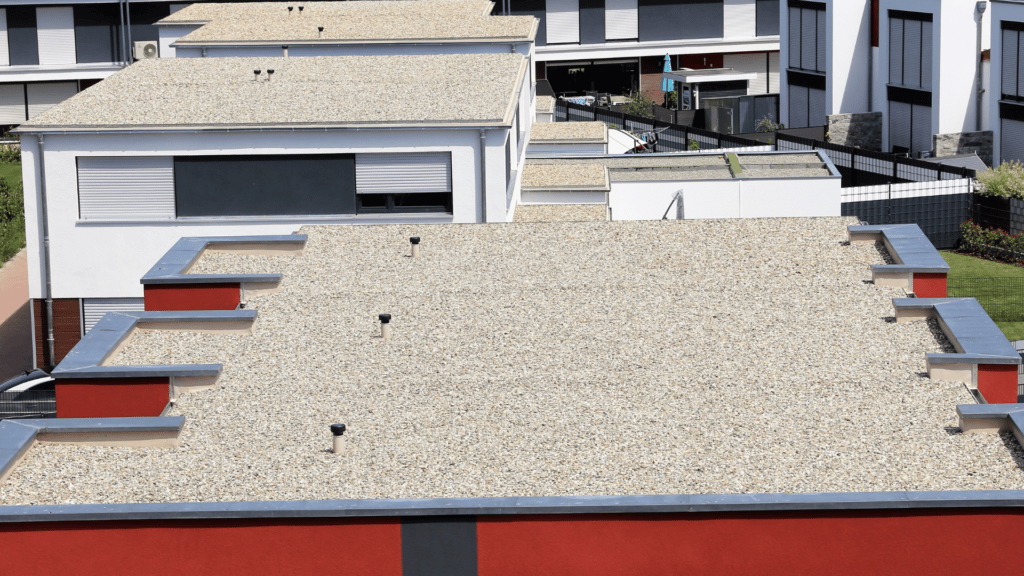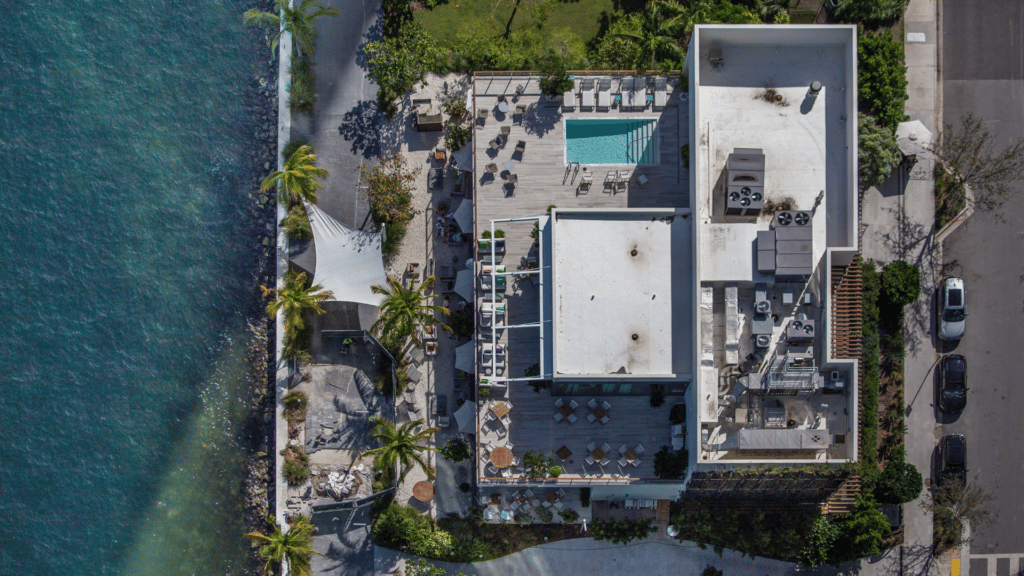Roofing is more than just a protective cover for a building—it’s a shield against nature’s harshest elements. Especially for commercial spaces, where safeguarding both the structure and its occupants is of prime importance. ORB Roofing Solutions a commercial roofer near you offers the expertise and reliability needed for comprehensive protection..
At its core, commercial roofing, especially commercial flat roofing, leverages advanced construction techniques and employs durable materials suitable for commercial structures. Be it metal, asphalt, rubber, or other specialized materials, our commercial roofing systems are designed keeping in mind the unique requirements of flat or low-sloped roofs. The choice of material predominantly depends on the building’s unique needs and the prevailing climate conditions.
At ORB Roofing Solutions, our team of certified commercial roofing contractors near you is well-versed in these systems. With comprehensive licensing and insurance backing us, we promise roofing solutions that stand the test of time.


Comprising multiple layers of bitumen interspersed with reinforcing felts, BURs are known for their durability and UV protection. However, their weight often demands additional structural support, and they can last over 30 years with apt maintenance.
This system blends asphalt with rubber modifiers and is reinforced with polyester or fiberglass. Modified Bitumen roofs, a staple of industrial roofing, are particularly flexible in colder climates, tear-resistant, and user-friendly. However, they generally have a shorter lifespan than some other commercial roofs.
The single-ply category includes TPO, EPDM, and PVC roofing. These systems are lightweight and UV-resistant, and they come in various colors. Their main drawback is their vulnerability to punctures, and some might offer less fire resistance than others.
Metal roofs, fashioned from materials like aluminum, steel, zinc, or copper, are lauded for their long life, fire resistance, and recyclability. Their initial cost is on the higher side, and they're susceptible to dents from hail or falling debris.
SPF involves a liquid mixture sprayed onto the roof, which expands and solidifies. It's an insulating, seamless solution that also bolsters structural strength. However, it needs periodic recoating and is susceptible to damage from sharp objects or excessive foot traffic.
Material durability and lifespan are critical considerations when selecting a roofing system. Durability reflects how well the material can withstand environmental factors, foot traffic, and other stresses, ensuring the roof remains intact. Lifespan, on the other hand, refers to the period a roofing system can efficiently serve its purpose before needing a commercial roof replacement. Factors like maintenance, local climate, and installation quality can impact both durability and lifespan.
Regular maintenance prolongs the effective life and performance of roofing materials, a critical service offered by our silicone roofing contractors near you.
Extreme weather conditions and UV exposure can affect durability, something our commercial roofing repairs near you is equipped to handle.
Ensuring proper installation techniques, performed by expert commercial roofing contractors, can significantly extend a roof's lifespan.
Energy efficiency in roofing systems plays a pivotal role in determining a building’s overall environmental impact and operational costs. An energy-efficient roof not only insulates the building, reducing the need for artificial heating and cooling, but it can also reflect sunlight and reradiate absorbed heat, reducing the urban heat island effect.
Roofing materials that are light-colored or have reflective coatings can bounce back a significant portion of the sun’s rays, keeping buildings cooler during hot months. This property reduces the strain on air conditioning systems, leading to energy savings. Conversely, efficient insulation in roofing systems retains heat during colder months, minimizing the need for heating systems.
Beyond immediate energy cost savings, an energy-efficient roof contributes to a reduction in greenhouse gas emissions since less energy consumption means fewer emissions from power plants. Additionally, such roofs can prolong the life of HVAC systems due to reduced usage and wear.
Southwest Florida's intense sun means roofs need materials that can reflect rather than absorb sunlight. By bouncing back the sun's rays, the roofing system can prevent excessive heat buildup, thus aiding in the reduction of cooling costs.
Given the frequent and sometimes torrential rains in the region, roofs should be designed to quickly and efficiently divert rainwater. This prevents pooling and potential water damage, which can lead to costly repairs.
Southwest Florida is no stranger to hurricanes. Roofing systems here need enhanced anchoring and robust materials capable of withstanding the high winds, torrential rains, and flying debris common in such storms.
Due to the area's high humidity levels, roofs in Southwest Florida must resist the growth of mold, mildew, and algae, ensuring the structural integrity of the roof and the health of building occupants.



The insulation properties of a roofing system play a significant role in the building’s overall energy efficiency, especially in a climate like Southwest Florida’s. The R-value, a measure of thermal resistance, indicates how well the roofing material insulates against heat transfer:
Florida’s unique climate demands roofing systems that are both robust and energy-efficient. Don’t compromise on your building’s protection or environmental impact. Ensure your roof meets the region’s specific requirements, from wind resistance to optimal insulation. Choose quality, choose resilience, choose a greener future. Contact us today for expert roofing solutions tailored to Southwest Florida’s demands, and take the definitive step towards a safer, more sustainable property.
We put our customers first. ORB exists to provide world-class service for our customers. We use only certified and high quality materials, provide and maintain the best installation warranties that the industry has to offer all at affordable prices – sometimes as much as 40-50% less than than traditional roofing contractors approach’s of our competitors!
Fort Myers | Cape Coral | Naples | Captiva | Pineland | St James City | Estero | San Carlos Park | Lehigh Acres | Bonita Springs | Marco Island
© Copyright 2024 ORB Roofing Solutions™
ORB Roofing Solutions takes your privacy and personal data very seriously and we will never sell or share your information. Please read our Privacy Policy for more details. This site is protected by reCAPTCHA and the Google Privacy Policy and Terms of Service apply.